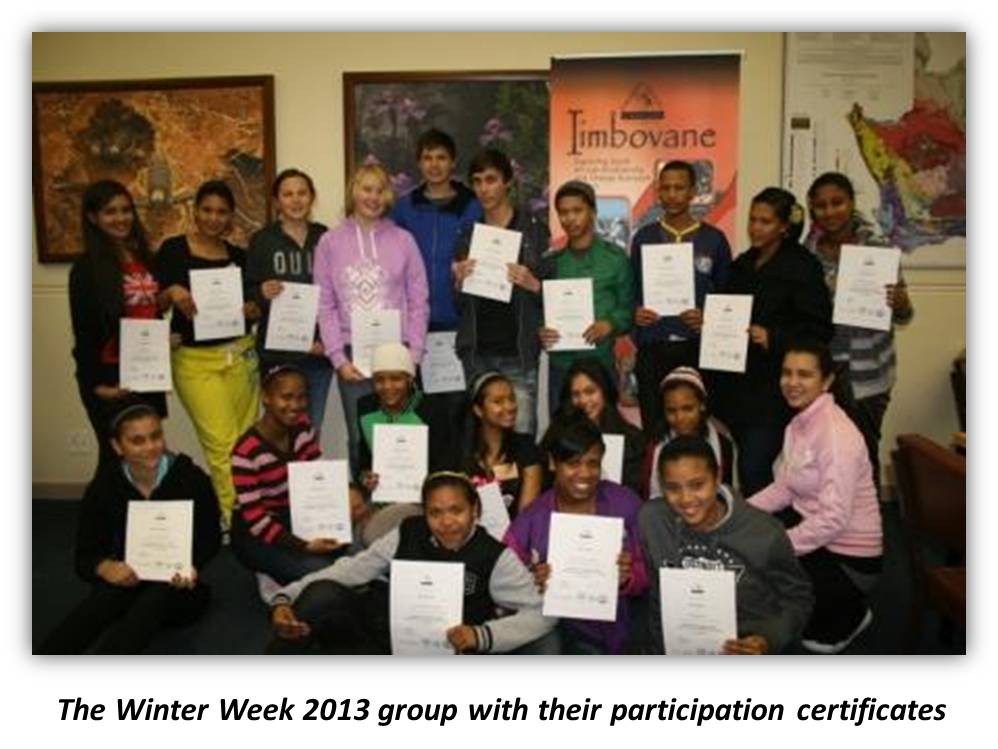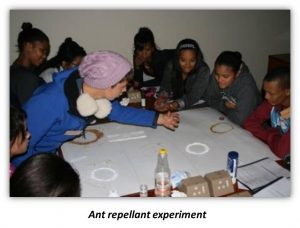Twenty Grade 10 Life Science learners from no less than six different schools across the Western Cape region participated in the Iimbovane Outreach Project’s 4th annual winter week held at Stellenbosch University from the 9-12 July 2013.
The program kicked off with a visit to Helderberg Nature Reserve in Somerset West where they were shown different insect sampling methods. They then split off into two groups (and had) to put these methods into practice in two different vegetation types, namely pine forest and recently burnt protea “forest”.
Joining this group of enthusiastic learners were four previous winter week participants from the project’s 1st official winter week in 2010 who acted as mentors to the learners. The mentors, who are all now first year students at the university, were Samantha Witbooi, Robin Rex (both from Atlantis SS), Janine Daniels (Malibu HS) and Roswill van Rooyen (Weltevrede SS) all of who gladly shared their Iimbovane experiences and expertise with the first-timers.
The insects collected were taken back to campus where they were taught how to use basic insect identification keys and then identify their own insects. For a bit of fun, three experiments were performed using live Argentine ants. The ants’ colour and taste preferences were tested, as well as the efficacy of various home-made and store-bought products to act as repellants. The learners enjoyed the first-hand experience of observing ant behaviour and were intrigued by the results.
Fun aside, the learners then had to put all their results together and prepare presentations explaining their findings, just as scientists do. It was very rewarding to see their interpretations of our explanations of the previous day’s field work and lessons.
To round off the informative week, the learners were introduced to another important component of biodiversity…plants. The Karoo Desert National Botanical Garden staff in Worcester welcomed our winter week group with a plant adaptations lesson, where one of the learners (Preston Arendse) was asked to dress up based on hot weather conditions. The learners could easily relate their own adaptations to the heat with that of plants. Their “attention paying skills” were tested when the learners were taken out into the Karoo Gardens. It was captivating for them to physically see each plant’s adaptation, and they even pointed out a few of their own that were not mentioned during the lesson.
The learners left for home having a greater understanding of not just the importance of biodiversity but also of the important roles played by plants and insects, as well as the relationships between the two and how we unconsciously rely on them in our daily lives.






